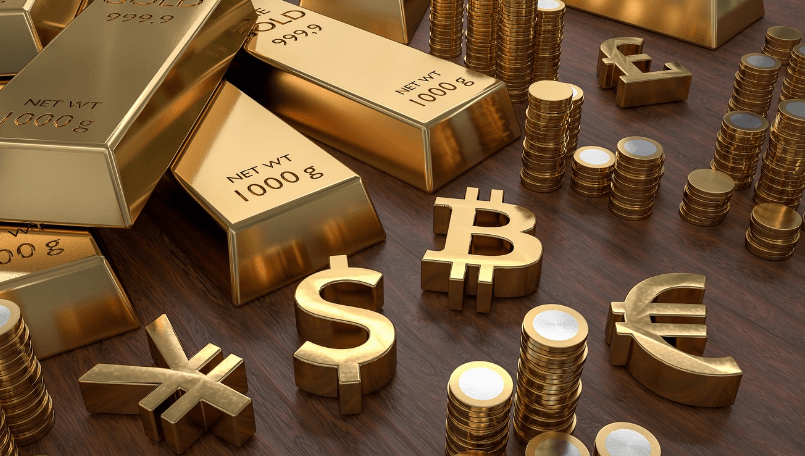What is the difference between spot gold and gold futures, and which should you invest in?
There are a plethora of choices available when selecting an asset to invest in—from stocks to property to precious metals.
Gold has one of the most active global markets, and the global market size for gold is actually projected to reach USD 189.6 billion by 2022. The pandemic, which rocked national economies, caused a surge in investor interest for gold. Because its value is linked to a physical asset, it is an especially valuable investment in times of political and financial instability.

Newbies who have never invested may be confused by terms such as “spot gold” and “gold futures”. Before you begin your investment journey, it is best to learn about these different terms and fully understand how gold investments work. Here is some crucial information that can help you decide which kind of gold to invest in.
Best Gold Brokers
What are spot gold and gold futures?
Spot gold and gold futures differ in the way they are traded. Spot gold is purchased and traded “on the spot”, hence its name. By buying spot gold, you immediately swap your cash for gold at its current, real-time price.
Gold futures differ from spot gold as the transaction does not take place instantaneously. Instead, you make a deal to trade a certain amount of gold at today’s price, but you will only pay on the settlement date. Gold futures cannot continue trading when the settlement date arrives, as the settlement date is the final date of the trade for buyers to make payment and sellers to deliver the promised gold. Many futures contracts last for three months.
The difference between spot gold and gold futures
1. Varying risks
Gold futures are a form of speculation—you buy gold hoping that the price will rise in the future, so you can then make a profit. If the price of gold drops in the future, you might reconsider your speculation and decide not to buy the gold after all. But if the price of gold rises, some sellers might back out of the deal because they feel they’re missing out on potential earnings.
To avoid these kinds of scenarios, you have to pay a margin to trade gold futures—the down-payment which ensures that the deal you have made will go through.
2. Overnight swaps
Spot gold trading allows overnight swaps, where buyers keep their positions in gold open overnight.
3. Fees
Gold futures incur exchange, commission, and regulatory fees. A fee is chargeable for each contract you make in addition to the margin.
With spot gold, you only pay for the price of gold at the time of purchase. Some platforms do not even charge commission fees!
4. Spread differences
These two assets also differ by spread and minimum tick size. A price spread is the difference between the price you’re selling your gold at, and the price buyers are offering to buy your gold.
Tick size is the difference between two price points, the slight price movement, or the variation between a bid and offer price. Spot gold has a minimum tick size of 0.01, and gold futures at 0.10.
Pros and cons of gold futures
Speculative buyers who want to make large profits often explore gold futures. Because you can purchase larger amounts of gold with a small margin, you could potentially earn much more if the price of gold you have agreed to buy rises in the future.
Still, gold futures often incur higher costs compared to spot gold. You have to pay margins, interest rates, insurance, and other incidental expenses.
One of the major risks of gold futures is that prices can drop drastically from the time of signing an agreement to the delivery of gold, resulting in a profit loss. Additionally, the margin you have to pay can fluctuate. If you only have a limited amount of cash to invest, be careful. Investors who are unable to pay to top up their margin stand to risk losing their entire investment.
Pros and cons of spot gold
If gold futures sounds too risky and does not appeal to you, consider trading spot gold instead. Spot gold is a much safer option, especially for new investors without any prior knowledge of the gold market.
There are lower risks for spot gold as it is direct and straightforward. You pay the amount in the spot market without having to worry whether price fluctuations in the coming months will impact margins or cause you to buy overpriced gold. There is also more flexibility in the volume of gold as you can purchase as much or as little spot gold as you want.
Due to the immediate delivery of gold, spot gold has higher liquidity than gold futures. You can buy and sell any time you want according to the market price.
However, there are also downsides to buying and selling spot gold. You’ll need to store spot gold in a secure location like a lockable vault and pay for your own insurance. Small physical assets can be easily misplaced, and the code to a vault can be forgotten.
it’s unclear how long you would need to hold on to gold before its price appreciates. Liquidating your spot gold through a dealer can also be expensive, since some charge premium fees for gold bars or coins.
How do I start investing in gold?
Gold is the perfect asset to start with if you are new to investing, as you do not require a large amount of money to begin. The gold market is also not as volatile as other investments such as stocks, making it safer to invest in.
There are many online trading platforms available to start your gold trading. Everest Gold is a convenient platform that allows you to trade anytime and anywhere through their app. The gold you buy on the app is backed by real physical gold, yet secured and insured by Everest Gold—taking much of the worry off your hands.
Try out the Gold trading platform and enjoy zero transaction fees. Start your investment journey today!



No Comments found